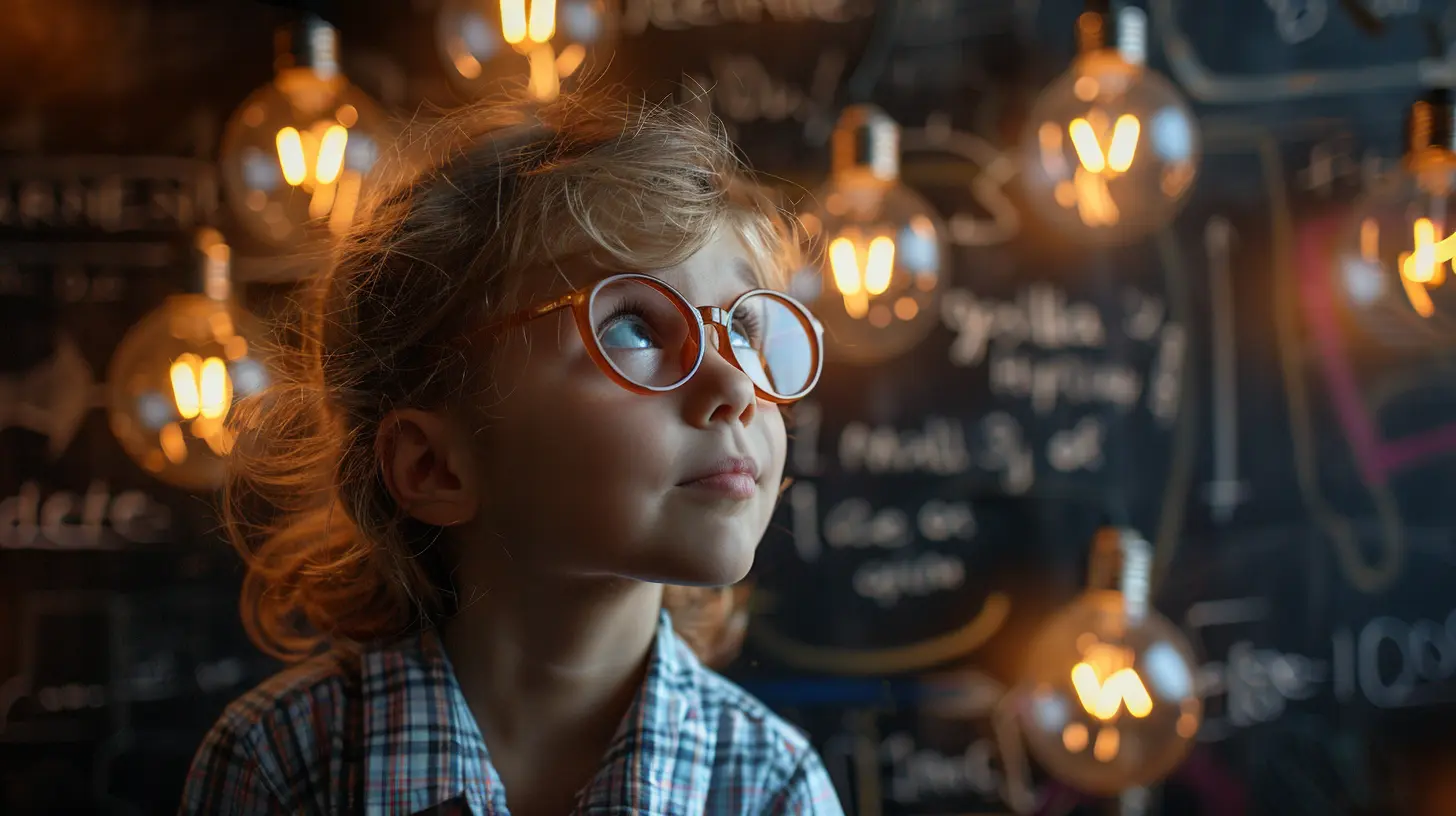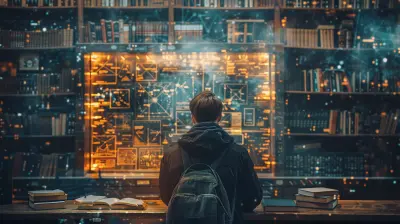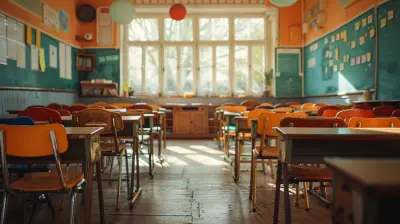Critical Thinking as a Tool for Social Justice in Education
23 July 2025
Let’s take a moment and be honest—how many times have we heard the words “critical thinking” thrown around in classrooms, workshops, and self-help books? Probably more than we can count, right? But have we ever stopped to really ask ourselves: what _is_ critical thinking, and more importantly, how can it actually push the needle forward for social justice in education?
If you're like most of us, you might think of critical thinking as some abstract academic skill—used by philosophers, intellectuals, or maybe just your awkwardly brilliant classmate who always had their hand raised. But here’s a truth bomb: critical thinking is for everyone, and it's one of the most powerful tools we have to challenge inequality, shift mindsets, and foster a fairer world—starting right inside classrooms.
In this post, we're diving deep into how critical thinking isn't just a fancy buzzword, but a game-changing superpower in the fight for social justice in education.
Understanding Critical Thinking Without the Fluff
So what exactly is critical thinking?Think of it as the mental version of a Swiss Army knife. It’s the toolkit that helps us:
- Ask the right questions
- Analyze information instead of just accepting it
- Challenge assumptions
- Recognize biases (yes, even our own)
- Make thoughtful decisions
Now, imagine giving every student that toolkit. Wouldn’t that elevate the type of conversations, choices, and changes being made not just in school, but in society?
Critical thinking means going beyond the "what" and digging into the "why" and "how." It's like peeling back the layers of an onion. Each layer reveals something deeper—and sometimes, it might make your eyes water, but it gets you closer to the truth.
Social Justice Starts in the Classroom
Social justice? Big concept. But at its core, it’s about fairness, equality, and giving every individual—regardless of race, gender, income, background—the same shot at success.Now imagine trying to achieve that without teaching students how to think critically. It'd be like trying to play chess without knowing how the pieces move. You’d be in the game, sure—but totally powerless.
Education isn't just about passing tests. It's supposed to empower students to question injustice, demand better systems, and create visions of a fairer world. That all starts with a mind that knows how to process information, question norms, and think independently.
Why Critical Thinking and Social Justice Are a Perfect Match
Let’s connect the dots: Social justice is about change. Real, meaningful, deep-rooted change. But change doesn’t just happen—it’s sparked by people who see something wrong and choose to do something about it. People who aren’t afraid to ask, “Why is it like this?” and “How can it be better?”And that’s where critical thinking walks in like a superhero.
1. It Helps Us See the Bigger Picture
Critical thinkers aren’t content with surface-level facts. They dig deeper—into history, data, systems. This matters when you’re trying to understand things like racial inequality, gender discrimination, and educational disparities. You stop blaming individuals and start examining systems.Example? A student might notice how schools in low-income neighborhoods don’t have the same resources as those in wealthy areas. Instead of saying “those students just don’t try hard enough,” a critical thinker might ask: “Why is funding so uneven?” and “What systemic issues are at play?”
2. It Teaches Us to Challenge the Status Quo
Let’s be real—the status quo often isn’t fair. Critical thinking empowers students to challenge harmful norms and question traditions that no longer serve society.Whether it’s outdated curriculum that ignores diverse voices or disciplinary practices that disproportionately affect marginalized students, critical thinking gives young people the tools to speak up and advocate for better.
3. It Builds Empathy Through Perspective-Taking
Believe it or not, critical thinking isn’t just about cold logic. When done right, it boosts empathy too. It teaches us to consider other people's experiences, especially those different from our own. That kind of reflection is essential for understanding oppression, privilege, and how we all play a role in shaping society.
How Educators Can Foster Critical Thinking for Social Justice
Let’s shift gears. If critical thinking is the key, how do we actually hand it to students? Teachers, parents, mentors—this one’s for you.1. Create Safe Spaces for Dialogue
If students are going to push boundaries with their thoughts, they need to feel safe doing it. We’re talking about classrooms where mistakes aren’t mocked, opinions are respected, and everyone feels heard.Encourage debates. Let them question you. Let them challenge accepted ideas. That’s how growth happens.
2. Use Real-World Issues to Spark Thought
Bring in current events. Use documentaries. Dive into books that represent diverse voices. Ask open-ended questions like:- “How might this issue affect different communities?”
- “What assumptions are we making here?”
- “Who benefits from things staying the same?”
The goal? Connect classroom learning to real-life implications.
3. Teach Students to Spot Bias
Media literacy is a game-changer. Show students how to analyze sources. Discuss bias in news, textbooks, and even their own thoughts. When students can dissect information instead of blindly accepting it, they become powerful agents for truth and justice.4. Model Critical Thinking Yourself
Remember, students are sponges. They pick up on how you think, speak, and act. So share your thought process. Talk about the biases you're working through. Admit when you don't know something. Show them that critical thinking isn't about being perfect—it's about being intentional.The Ripple Effect: Critical Thinkers Become Changemakers
When students learn to think critically, the effects don’t stop at the classroom door. They take those skills into the world. Into job interviews. Community meetings. Polling booths. Parenting. Activism.They become voters who can see through empty slogans. Workers who fight for fair treatment. Leaders who think long-term. Humans who care.
That’s the long game we’re playing with education—not just well-behaved students, but bold, thoughtful, freedom-fighting adults.
It's Not Always Comfortable, But It Is Always Worth It
Let’s be real: teaching critical thinking for social justice isn’t always smooth sailing.You’re going to hit resistance—maybe even from administrators, parents, or students themselves. Because when you start questioning systems, things get uncomfortable fast.
But change has never lived in the comfort zone.
Keep going.
Every student who learns to think critically is a step closer to a better world. Every tough conversation, every “why” question, every challenged assumption—it all adds up.
Actionable Ways to Start Right Now
Still with me? Good. Let’s get practical. Here are some ways you can start blending critical thinking and social justice today:- Teachers: Incorporate one social justice-focused discussion or assignment per week.
- Students: Pick one issue you care about and research the root causes behind it—not just headlines.
- Parents: Over dinner, ask your kids open-ended questions about fairness, ethics, and current events.
- School Leaders: Provide PD (Professional Development) focused on equity and critical thinking.
- Everyone: Practice... patience. It’s a marathon, not a sprint.
Final Thoughts: From Thought to Action
Critical thinking is not just an academic skill. It's a social justice muscle. And just like any muscle, the more we use it, the stronger it gets.So let’s use it.
Let’s raise a generation of thinkers—not just memorizers. Let’s teach young minds not only to absorb the world around them, but to question it, challenge it, and improve it.
Because at the end of the day, education should be more than a path to a paycheck. It should be a launchpad for justice.
And if we get that right? We don’t just change schools. We change society.
all images in this post were generated using AI tools
Category:
Critical ThinkingAuthor:

Madeleine Newton
Discussion
rate this article
1 comments
Bernadette Vaughn
Critical thinking isn't optional; it's the sass we need to dismantle ignorance in classrooms!
August 3, 2025 at 12:18 PM

Madeleine Newton
Absolutely! Critical thinking empowers students to challenge assumptions and promotes a deeper understanding of social justice issues. It's essential for fostering informed and engaged citizens.


